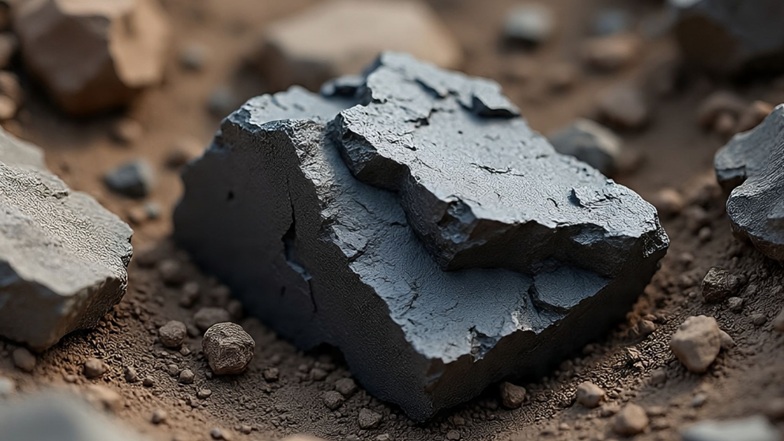The electric vehicle (EV) world just got a major shake-up, and it’s not from a new Tesla model or a breakthrough battery tech. The U.S. Commerce Department dropped a bombshell with preliminary anti-dumping duties of 93.5% on Chinese battery material graphite imports—a critical component in EV batteries. When you stack that on top of existing tariffs, we’re looking at an eye-watering effective rate of 160%. This move is sending ripples through the global EV supply chain, and it’s got automakers, battery makers, and consumers wondering what’s next. Let’s break it down in plain English and see why this matters to everyone from Detroit to your driveway.

Graphite isn’t just the stuff in your pencil—it’s the unsung hero of EV batteries. It’s the key material used to make anodes, the part of a lithium-ion battery that helps store and release energy. Without graphite, your Tesla, Chevy Bolt, or Ford Mustang Mach-E wouldn’t get far. Last year alone, the U.S. imported about 180,000 metric tons of graphite products, with roughly two-thirds coming from China, according to BloombergNEF. China dominates the global graphite processing game, refining the raw material into the high-purity stuff EVs need. Think of them as the chef who turns raw ingredients into a gourmet dish—except this dish powers your car.
So, why the tariffs? A trade group called American Active Anode Material Producers cried foul, claiming Chinese companies were flooding the U.S. market with unfairly subsidized graphite, undercutting American producers. In December, they petitioned federal agencies to investigate, and the Commerce Department’s July 17 preliminary ruling backed them up, slapping on these hefty duties. The final call is set for December 5, but the shockwaves are already hitting.
Here’s where it gets real for automakers and, ultimately, you. The new 160% tariff could add about $7 per kilowatt-hour to the cost of an average EV battery cell, according to Sam Adham, head of battery materials at CRU Group. To put that in perspective, that’s enough to wipe out the profits of major battery makers like South Korea’s LG Chem or SK On for one or two whole quarters. Ouch! Even worse, it could eat up a big chunk of the battery manufacturing tax credits from the Inflation Reduction Act, which were meant to make EVs more affordable.
Big players like Tesla and Panasonic are not thrilled. They’ve been lobbying hard to block these tariffs, arguing that U.S. graphite producers can’t yet match the quality or quantity they need. Tesla, for instance, relies heavily on Chinese graphite to keep its Gigafactories humming. Without a steady, high-quality supply, production could slow, and costs could climb—guess who ends up footing that bill? Yup, it’s you, the consumer, potentially facing higher EV prices.
This tariff drama isn’t just a U.S.-China spat—it’s a global EV supply chain thriller. China’s not just a graphite supplier; it’s the graphite supplier, controlling the lion’s share of processing capacity. The International Energy Agency (IEA) flagged graphite as one of the most vulnerable materials to supply risks, urging countries to diversify their sources ASAP. But that’s easier said than done. Building up domestic graphite production or finding new suppliers takes time, money, and know-how—none of which the U.S. has in abundance right now.
Add to that Beijing’s own export controls on critical minerals and battery tech, and you’ve got a recipe for tension. China could retaliate, tightening the screws on graphite exports, which would leave U.S. automakers scrambling. It’s like a high-stakes poker game, and the chips are your future EV’s price tag.
Looking ahead, graphite’s not going anywhere soon. The IEA predicts it’ll remain the go-to anode material for lithium-ion batteries through at least 2030, when silicon might start nibbling at its market share. So, for now, the EV industry is stuck grappling with this graphite bottleneck. The Commerce Department’s final ruling in December will either cement these tariffs or offer some relief, but don’t hold your breath for a quick fix.
For consumers, this could mean pricier EVs in the short term, especially for brands leaning on Chinese graphite. For automakers, it’s a wake-up call to invest in domestic or alternative supply chains, even if it’s a costly pivot. And for U.S. graphite producers? It’s a chance to step up, but they’ll need to prove they can deliver the goods at the scale and quality automakers demand.
The graphite tariff saga is a classic case of trade policy crashing into real-world economics. It’s meant to protect American producers, but it risks jacking up EV prices and slowing the green revolution. Whether you’re an EV enthusiast, a budget-conscious buyer, or just someone who cares about clean energy, this is one to watch. By December, we’ll know if these duties stick and how the industry adapts. Until then, keep an eye on your favorite EV’s sticker price—it might just get a tariff-fueled glow-up.
Related Post
